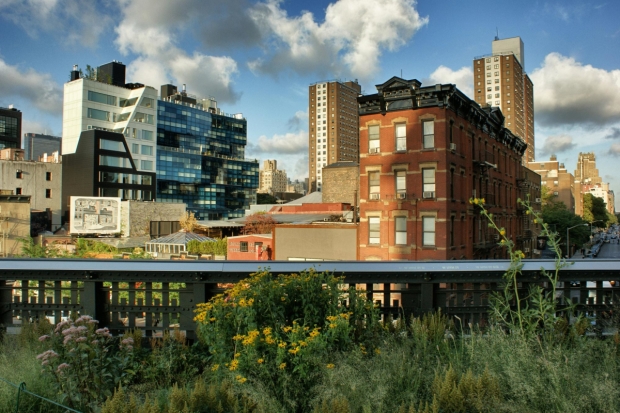Are theatre programmes the best way to plant plays in context?
After a visit to the High Line in New York, Matt Trueman asks whether enough is done to make sure people know enough about the context of a show

© Iker Alonso/Flickr
This blog is going to take a stroll. It's going to go on about gardening for a bit, but it will, in its own time, come back to theatre. Plants first, plays second, I promise. We aren't WhatsInSeed, after all.
When I was in New York last month, I walked the High Line again – that stretch of defunct railway track given new life as a garden that snakes through the city at rooftop level. You might well have walked it. As tourist attractions go, it’s a popular one, almost always thronging with strollers and school groups idling an hour or so of their day away. It’s a pleasure – and a free one at that.
I love it, this burst of nature smack in the middle of man-made Manhattan, but I've never looked at it too closely. It was enough to see greenery set against glass buildings, to walk its length and breath in as I went. This time, however, I was in the best possible company. My girlfriend’s a gardening writer, and we had with us Thomas Piper, director of a new documentary on the High Line’s revered horticulturalist Piet Oudolf.
It's the job of theatres to frame or set up a play
Oudolf has transformed contemporary landscape gardening – so the two of them told me. His planting is rooted in a philosophy. Gardens aren’t meant merely to be at their best in bloom. Oudolf’s are more cyclical than that, more symphonic. The point is to get one’s garden to chime all year-round, so that dying blooms on their way out offset new growth coming through. It’s a way of embracing nature rather than imposing on it, and it gives his designs a natural, meadow-like quality – perfect for an old, overgrown railway track abandoned to flora.
Knowing that transformed the High Line – or rather the way I saw it. Where once I’d overlooked plants past their best, I saw them anew: baubles of black seed pods backed by wispy white grasses; yellowing, browning leaves offsetting fresh bursts of colour. My garden guides pointed out the way the High Line changes en route. A raised section takes you into the canopy. Another is deliberately, jarringly manicured. Everywhere you look, there’s thinking at play. I’d just never seen it as such. I didn’t know what to look for.
Why tell you all this? Because Oudolf’s style struck me as a kind of dramaturgy: rhythms, coherence, structure, planning. But without someone to show me, whatever I might have intuited, I’d never have spotted it, still less understood it. Explaining this to a friend on returning home, they replied: 'That’s what I need with theatre'.
Understanding the artists can be the thing that unlocks their work
That’s something to which all criticism should aspire. Reviews are many things – from consumer guides to reportage – but the best give audiences a way in. They can tee a show up, set it in context, highlight thinking that might go unseen. Criticism can – and should – be beneficial to audiences. It can change how we watch and so what we see.
In this, though, theatres have their own role to play. It’s their job to frame or set up a play; to prep audiences to watch and provide all they might need. There’s an art to a good programme, and it goes beyond company biogs and director’s notes. It can provide context and illuminate ideas, and its essays should work as well pre- or post-show. (Tricky that.)
Most shy away from one thing, though: the artists. A shame because understanding them, their craft or aesthetic, can be the thing that unlocks their work. To see The High Line properly, it helped to understand Oudolf.
Others might prefer to go in blind – and that’s fine. There’s a pleasure to seeing what springs to mind. Art, after all, has no answers. But the sense that it does, that 'I just didn’t get it', is one of the things that scares audiences away. To open up access and pull people in, theatres need to help.
That still, largely, stops with the programme – an analogue doc in a digital age. Most follow a fixed formula: essays, biogs and ads. What might replace that? How else might theatres frame shows? We’ve got the tools to offer options, to lay out a spread of information. It’s time we used it.
It’s true that a good play needs no introduction, to misquote As You Like It, but good plays (and good gardens) prove the better by the help of introductions. Theatres could do with planting some seeds.
















